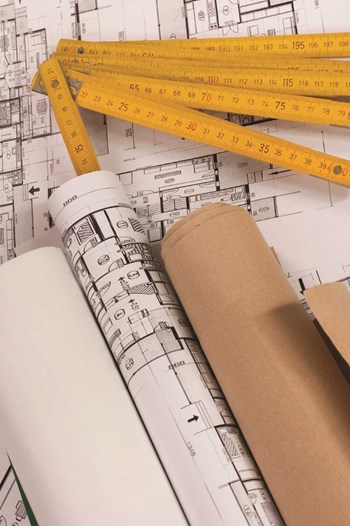
New Yorkers live in an ever-changing city that’s been building and rebuilding continuously since its inception. Today, throughout the five boroughs, according to the New York City Department of Buildings (DOB), there are more than 950,000 buildings. Most were built in varying styles during dozens of eras of development. They are our city’s architectural heritage.
The Department of Buildings issued close to 90,000 building permits in 2007. However, most of these permits—more than 90 percent—weren’t for new buildings, but for renovations or modifications. Why? Because many buildings, both commercial and residential, are no longer suited to their original uses or to the intentions of their original architects, builders or owners.
Preserving Your Investment
Most building owners want to preserve or extend the ongoing value of their real estate investments. This can be accomplished through architectural redesigns, modifications or renovations. Architectural changes must be managed. This need to manage change and protect property from devaluation or obsolescence has given rise to the increasingly important role of the building architect.
The building architect’s “Master Plan” can protect real estate investments by establishing guidelines for renovations to ensure that future tenant work will conform to clearly defined standards. Yet, only about 10 percent of these properties have master plans, which can protect the integrity of a residential building by preventing it from becoming a hodge-podge of mismatched, inappropriate and incongruous design schemes with no consistency from floor to floor, or front to back.
Uniform Design Standards. The building architect can develop architectural guidelines for historic or landmark buildings, providing updates that meet today’s legal and zoning codes, while recognizing that original details such as floors, moldings, terra cotta walls and period plumbing fixtures are often irreplaceable parts of the building’s historic fabric, heritage and pedigree.
Value. The building architect can remove existing violations, especially local law citations, identify and correct DOB violations, and serve as project manager to hire and supervise contractors. The building architect can help increase the rent rolls of commercial buildings with the architectural redesign of lobbies and entrances as well as new, modern, unified storefronts and canopies. For a residential property, enhanced “curb appeal” can be accomplished through lobby modernization along with designs for the upgrading of concierge areas.
Public Safety. The building architect can conduct local law inspections to protect the investment in the building, ensure safety and minimize exposure to fines or lawsuits. As proactive insurance against power blackouts, the building architect can design a scheme for installing emergency generators and other safeguards.
Demographic Trends. For individual residential apartments, the building architect can oversee tenants’ architects’ designs for redesigning floor plans and combining apartments—up, down and sideways—to meet the needs of growing families who choose to stay put rather then relocate.
Amenities. The building architect can identify and redesign a residential building’s often overlooked and undervalued spaces to create gyms, exercise rooms, playrooms, laundry rooms and storage areas. The building architect can also create designs for green roofs and roof decks, which can provide an amenity for all residents, create more appeal for potential buyers and foster a building-wide sense of community.
Maintenance and Marketplace Competitiveness. The building architect can design energy-efficient air-conditioning, often using setbacks and through-wall air cooling. The building architect can redesign the lobby for both a contemporary architectural look as well as reconfigure space for security devices, doorman needs, wheelchair and stroller access, and delivery storage, including refrigeration as well as design accessibility to meet Americans with Disabilities Act (ADA) standards.
Return on Investment. The building architect promotes owners’ interests by ensuring that they get the most enjoyment, safety, utility and return on investment (ROI) from their properties. The building architect protects the integrity and value of the building while positively enhancing future opportunities for upgrades and modernization. Perhaps most important of all, the building architect can give the owner of a commercial or residential building an overview and a cost-effective vision for the future of how to meet both business and lifestyle goals, and identify and capitalize on valuable missed opportunities.
Steven B. Kratchman, AIA, an architect and urban designer, is the founder and chief executive officer of the Manhattan firm of Steven Kratchman Architect, P.C. He specializes in projects from in-home architecture and design to multi-million dollar “from the ground up” developments and conversions.






Leave a Comment